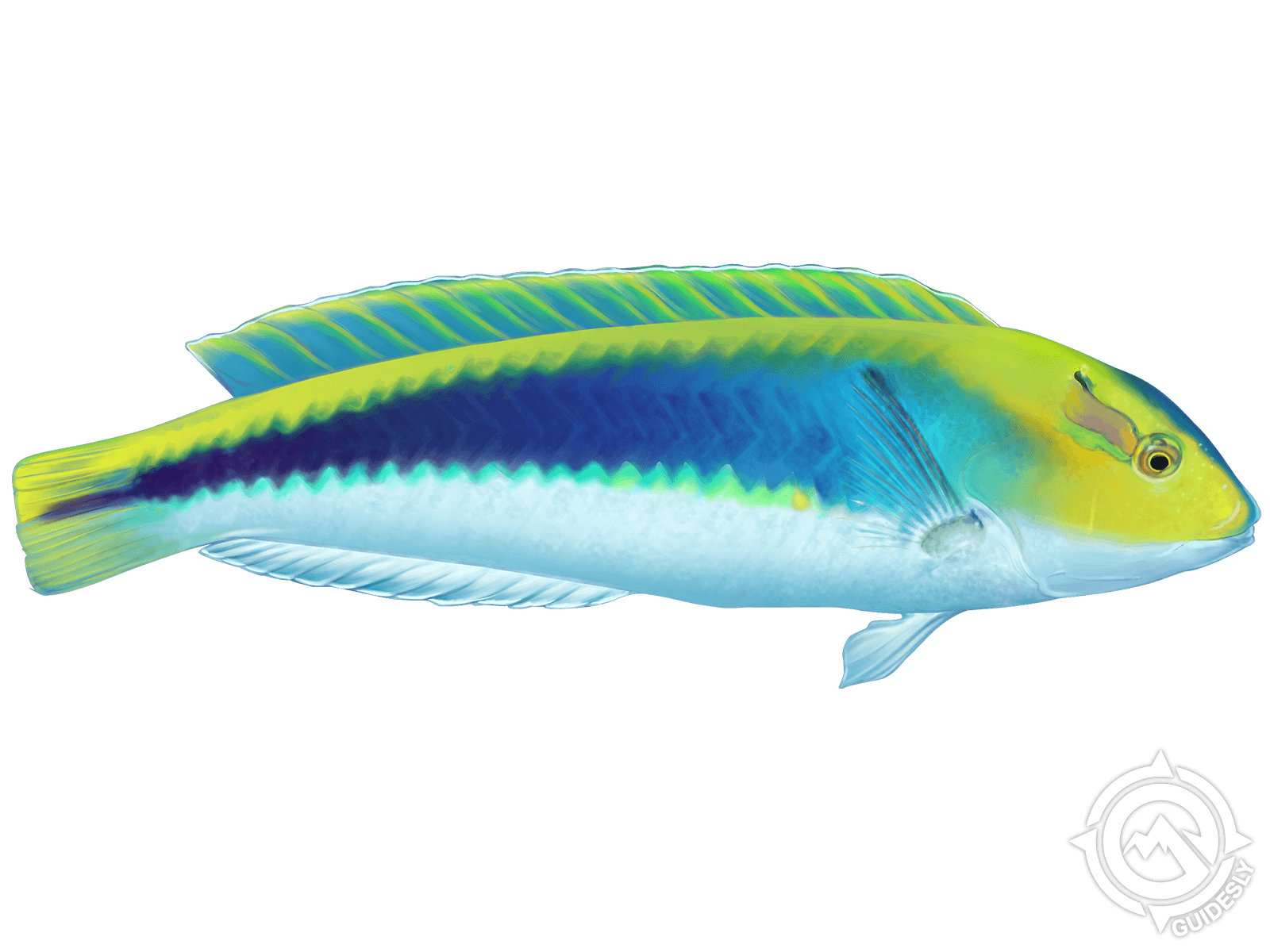Yellowcheek Wrasse

Species Details
Halichoeres Cyanocephalus
Labridae
Perciformes
Nearshore
lbs.
7" - 11"
Yellowcheek Wrasse (Halichoeres cyanocephalus) Fish Description
The Yellowcheek Wrasse, also known as the Lightning Wrasse is a small fish species with vibrant coloring. It has a bright blue to light blue-green body with a yellow band covering its back. As a juvenile, its coloring leans more towards purple, but this fades to a blue upon maturation. Juveniles and females of this species are also characterized by having yellow with a broad blue stripe from their eyes to the center of their caudal fin.
Size & Diet
The Yellowcheek Wrasse is a relatively small fish species. Upon maturation, it can grow up to 11 inches in length. The Yellowcheek Wrasse juvenile is considered a cleaner. It cleans the fins and margins of client fish, picking off ectoparasites, tissues, gnathiid isopods and copepods off its clients. Its clients include reef fishes such as damselfishes, goatfishes, and surgeonfishes.
As adults, the Yellowcheek Wrasse is often found grazing above the surface of coral reefs looking for food, mostly worms, small crustaceans, and algae. It has a set of small protruding teeth. It grinds down the hard coats of its food with its pharyngeal jaws. It is also known to bash its food objects against hard objects before ingesting them.
Interesting Facts about Yellowcheek Wrasse
- The Yellowcheek Wrasse is also sometimes called the Sand-reef Wrasse as it is known to dive in and bury itself in sand.
- The Yellowcheek Wrasse is a most sought-after aquarium fish because of its vibrant coloring.
- To keep the Yellowcheek Wrasse as an aquarium fish, it is recommended that it be kept with fish only. Its tankmates are ideally bigger and more aggressive, such as groupers or angelfishes.
- Bigger Yellowcheek Wrasses are not recommended in reef aquariums as their habit of diving into sand causes sand clouds to disperse in the water, and this can be harmful on some corals.
- The ideal aquarium setup for the Yellowcheek Wrasse should have a fine sand bed and a few rocky crevices where it can hunt, as well as an open swimming area.
- The Yellowcheek Wrasse is hermaphroditic. If there is no male available during spawning season, a female can change sex and take on the male role.
- In warmer tropical waters the Yellowcheek Wrasse is known to mate and spawn all year round. It is considered monogamous in its mating habit.
- The larvae of this fish species is pelagic and go through two stages of development during which it changes colors.
Fishing Technique: How to Catch Yellowcheek Wrasse
The Yellowcheek Wrasse is not a popular game fish because of its small size. However, anglers fishing for them can catch them with a size 6 or 4 tackle and a light leader. They will take fresh mussels or worms. It’s not advisable to use shrimp or crabs as they will just nibble on them.
The Yellowcheek Wrasse is a good fish for young anglers as most piers will have a population of them. It is better to practice catch and release when fishing for this fish species, though. To catch and release, release it at water level as it cannot survive a big drop.
Habitat and Distribution
The Yellowcheek Wrasse is known to settle on the lower or bottom parts of the water column, usually over substrates. It is usually found in waters with depths between 65 to 300 feet.
Its juveniles, which are known to be specialized cleaners, have specific cleaning stations on gravely or sandy bottoms.
This fish species is reported to live in the western waters of the Atlantic Ocean and is commonly found on the reefs of the Caribbean. It ranges from the coasts of Florida, Antilles, to Brazil.

